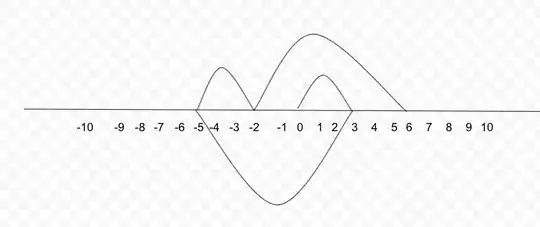I encountered the process called "Anthyphairesis" which apparently was the basis of the Euclidean algorithm and was also described in Chinese writings under the name "reckoning".
A description of the "reckoning" algorithm:
The method for simplifying parts: Take the numerator from thedenominator; in turn take the denominator from the numerator. When thenumbers [on the sides of] the numerator and denominator are equal to oneanother, then you can go on to simplify.
I am trying to understand the idea behind it by using an analogy of movements along the number line.
E.g. if we want to apply the process for $8$ and $3$ then it could be something like:
But I am confused on the process itself. I think the idea is that we move around in steps of the two numbers we are working on until we reach some limit, but I am not clear on how the process would work.
Could someone help on this?
